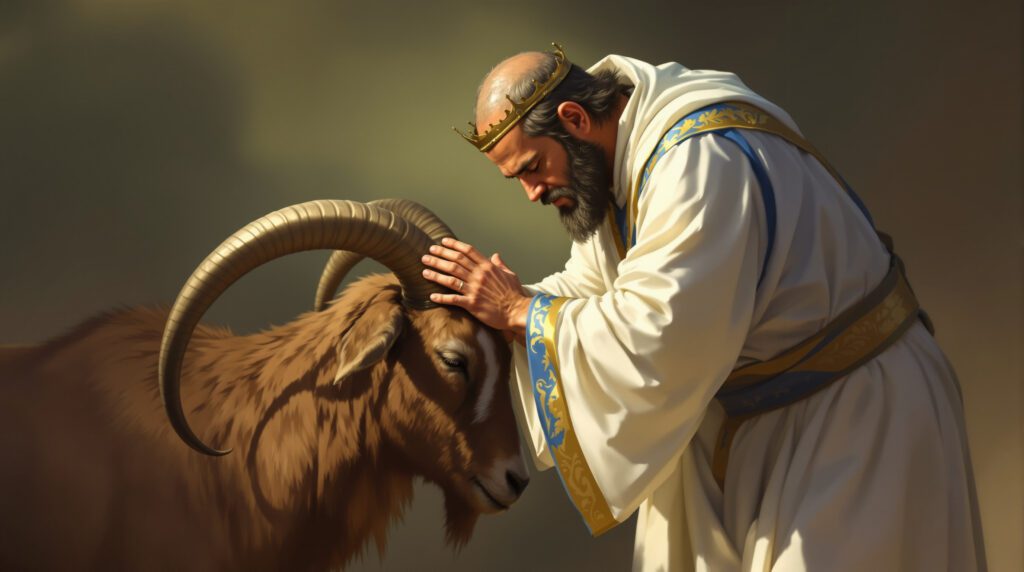We saw in our previous blog how in both covenants, God spoke. In the Old Covenant, God “spoke to our fathers by the prophets at many times and in many ways” (1:1),” (Hebrews 1:1), but now “in these last days he has spoken to us by his Son” (1:2). The author follows this majestic introduction with seven in-depth descriptions of the Son through whom God now speaks in the New Covenant age (Hebrews 1:2-4). Along with the prologue to John’s Gospel, this description of the Son is unparalleled in Holy Scripture. “In this brief introductory section, God’s revelation through his Son is seen to be not only superior but final. Bearing in mind that such a conclusive revelation requires a very special means, the writer introduces his readers to the superior nature of the Son and also links what he is with what he has done” (Tyndale Commentary). I will take the first three statements in this blog and the remaining four in the blog to follow.
The first of the seven in-depth statements says the Son was “appointed heir of all things” (1:2). At first glance, this statement can seem confusing, seemingly conveying that He became what he previously was not. But this statement corresponds to a statement in John’s Gospel that “all things were made through him, and without him was not anything made that was made” (John 1:3). Hebrews is focused on the fact that (borrowing a phrase from the Colossian letter), “all things were created through Him and for Him” (Colossians 1:16). In other words, they writer of Hebrews states the fact that he is the heir of all things, not telling us when that happens.
The second in-depth statement is “through whom also he created the world” (1:2b). We’ve already traced this thought through the prologue to John’s Gospel and the Colossian letter. Jesus Christ is clearly presented in the New Testament as the agent through whom all things came into existence. But the writer specifically states that through Jesus the Messiah, the world came into being. The word for world is “aion” which signifies a specific period of time.
“The statement that God created the world through the Son staggers the imagination. There is no denying that God could have made the universe apart from his Son, but the New Testament is at pains to show that he did not do so. The Christians were convinced that the same person who had lived among men was the one who created men. A letter such as Hebrews, written from this conviction, could not fail to present a more than human picture of Jesus Christ. It is noticeable that this writer uses the word for ‘ages’ (aiōnes) and not the usual word for worlds (kosmoi) when speaking about God’s creative acts. The reason is that the word for ‘ages’ is more comprehensive, including within it the periods of time through which the created order exists. The more science discovers about the universe, the more marvelous is the thought that Christ is the agent through whom it was made. Rationalists may contend that scientific discovery makes the New Testament view of the world untenable, but the Christian claims the opposite” (Tyndale Commentary).
The third in-depth statement is “He is the radiance of the glory of God (Hebrews 1:3). The word radiance is a word best translated by a Greek word that means brightness. It is perhaps best translated by an old English word, ‘effulgence’ or ‘out-raying.’ Translated that way, it is clear that it is comparing the Messiah to the rays of the sun. Because of its brightness, humans have never actually seen the sun; we only know the sun by means of its rays. If you don’t understand that, go outside at noon on a bright sunny summer day and stare intently at the sun. You cannot but are forced to turn away due to its brightness. But the sun comes to us in terms of its rays. This is possibly what John means in his prologue when he states that “in Him was life and the life was the light of men” (John 1:4).
These first three statements, taken collectively, make it clear that the author is stating with no equivocation that Jesus is the very God of gods! Through Him, the physical world, as well as the ages, were created. In the next blog, we will carefully examine the remaining four in-depth statements. Together, they majestically convey the glory of the Son through whom God speaks in the New Covenant era.





0 Comments